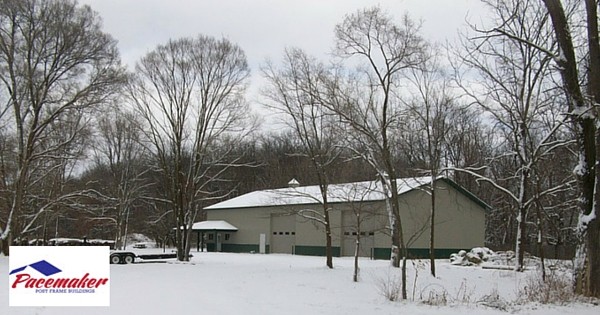Thinking about a new building for business or home use? Need a commercial building but want green, environmentally friendly components?
A Post-frame building can serve your needs!
Post-frame construction got its start in the 1930’s. Rural areas had wood readily available to be used for making telephone poles and other items, and through adaptive use they created the post-frame building method.
The result was more affordable and longer-lasting construction that reduced the amount of materials needed to build a structure. .
Post-frame construction today is growing in popularity because of its environmental benefits. Those benefits include energy efficiency, durability, and versatility.
Advantages of Post-Frame Construction Include:
1. Sustainability
The negative environmental impact of a building is the amount of non-renewable resources used in construction.
In traditional construction techniques, fossil fuels are used to create energy to manufacture and install materials as well as to provide the building’s power over its lifespan.
The wood used in post-frame construction is abundant, renewable and recyclable. Wood can be reliably certified to verify that it has been sourced sustainably.
When compared to other building materials, wood has far less of an impact on the environment. It requires less energy and causes less air and water pollution.
2. Better Insulation
We’ve noted this before, Post-frame buildings have higher R-values (insulation values) when compared to brick and masonry buildings. .
Their R-values are also higher than buildings with steel frames. Wood is an excellent insulator, so it makes a building more energy efficient.
The insulation value of wood comes from cellular air pockets that keep it from conducting heat. Thus, the end result is better heat retention, keeping out the cold, and lower utility costs.
3. Fewer Materials
Post-frame construction uses fewer materials to get the required load capacities. This is due to the fact that the structure gets its support from a few large columns that are spaced further apart instead of a higher number of smaller supports.
So, less materials, means less environmental impact. Learn more about The Science Behind Post Frame Buildings here.
4. Durability
The components in post-frame construction work in unison to make these structures very strong; so strong that post-frame construction can last well beyond 50 years with little maintenance.
Traditional construction systems load all the weight on the walls that are set on the floors. The floors are set on a firm foundation. If any of those components is compromised, the whole structure is placed at risk.
Post-frame construction is different. When the building is stressed, post-frame construction flexes rather than cracking or collapsing like traditional structures.
The wood posts work as support columns. There are trusses directly attached to the post frame to keep the roof from separating from the rest of the building.
The lower cost of construction combined with long-term energy efficiency make post-frame construction the best choice for saving the environment and saving money.
As always, we’re ready to answer your questions and talk more about the building or materials in a post frame building. Contact us today!

